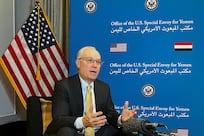After a strong year in 2017, the global sukuk market experienced a significant drop in issuance in the first half of 2018, down 15.3 per cent to $44.2 billion compared with $52.2bn in the first half of 2017.
The drop in foreign currency denominated sukuk was even more pronounced, down 45 per cent compared with the first six months of 2017.
There is no doubt that 2017 was a standout year for global sukuk issuance. For example, Saudi issuers raised more than $26bn of sukuk in 2017, including a $9bn inaugural sukuk in April. By comparison, Saudi issuers have raised less than $2bn so far in 2018.
That said, the global and regional macroeconomic climate has shifted significantly over the past 18 months, having a knock-on effect on the sukuk market. This is, primarily, for two main reasons.
Firstly, global tightening of liquidity conditions is putting downward pressure on the market. We forecast that the US Federal Reserve will hike its federal funds rate by another 50 basis points in the second half of 2018 following two increases of the first half of the year. We think central banks of GCC countries will mirror this increase due to the peg of their currencies with the US dollar. After reducing the pace of asset purchasing (AP), the European Central Bank will likely wind down its AP programme in December 2018 and start to raise interest rates in the third quarter of 2019.
Overall, we think that the liquidity channelled to the sukuk market from developed markets will reduce and become more expensive. Currently, European and US-based investors account generally for about one quarter of sukuk investment in terms of volume. At the same time, muted economic growth and declining lending activity in the GCC has shifted banks' focus to capital market activities in hopes of achieving higher yields than with cash and money market instruments.
The second reason contributing to the low performance of the sukuk market this year is the declining financing needs in the GCC, given continued expenditure reduction and stabilisation of oil prices over the last 12 months. Overall, we think that the gross commercial long-term debt issuance of GCC countries will decline by 15 per cent in 2018 from 2017. We understand that some countries in the region are on the starting blocks with potential issuances planned for the second half of 2018. However, we expect the overall volume of issuance for 2018 to remain subdued compared with 2017.
_______________
Read more:
From commodities to computers: Emerging markets' seismic shift
High oil prices do not eliminate risks to GCC sovereign ratings
_______________
Despite lower issuance from the GCC, Malaysia has been a bright spot for sukuk issuance, as its issuance increased by 50 per cent, represented by both government and corporate issuance. In addition, the repeal of the goods and services tax in Malaysia, if not countered by sufficient offsetting measures, could result in higher fiscal deficit and financing needs for the country. This could further boost its sukuk issuance.
Inherent challenges related to the sukuk market also continue to hinder its expansion. Standard-setting bodies have made significant efforts to drive forward the standardisation of sukuk, but there is still work to be done. Some market participants still think that standardisation of the industry is unrealistic and that it would be better to aim for harmonisation, or standards that vary across jurisdictions but leave some flexibility for implementation.
We recognise that the Islamic finance market has achieved a certain level of standardisation for the most common structures, while a few new instruments still need some refinements. In particular, investors are asking for additional clarity on the risks related to the Murabaha-Mudaraba structure that is widely used in some jurisdictions. Our view is that standardisation for cross-border sukuk issuance is not only achievable but will also boost the volume of issuance. It will also improve the attractiveness of the instrument to issuers by making the issuance process smoother and faster and will provide further clarity on the underlying risks.
While we don't attribute the recent drop in sukuk issuance in the GCC to the Dana Gas case, we do however believe that the underlying issue is partly suppressing investors' appetite for GCC sukuk. On a positive note, the dispute has prompted some changes in the legal documentation language for new sukuk issuances, reportedly, to reduce the risk of similar disputes occurring. Restructuring of debt is a common practice in the global capital market. However, in our view, we do believe there is a need for additional rules and clarity around restructuring and resolution of sukuk for both issuers and investors. For the Islamic capital markets, higher standardisation could help in setting these rules and achieving clarity.
Noting the factors above, in addition to the heightened regional geopolitical risks over the past 12 months, we maintain our expectations for overall volume of global sukuk issuance at $70bn to $80bn for 2018.
Dr Mohamed Damak is global head of Islamic finance at S&P Global Ratings, which is a member of The Gulf Bond and Sukuk Association.






